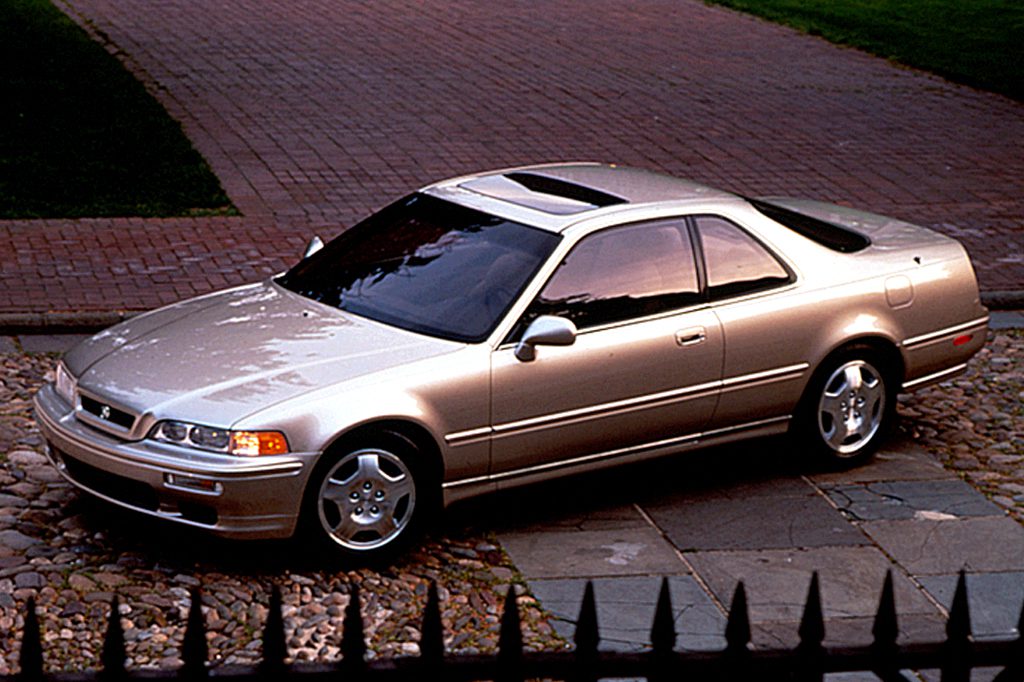| Premium midsize car; Built in Japan |
|
|
| Good condition price range: $1,100 – $3,000* |

1993 Acura Legend GS 4-door sedan

1991 Acura Legend L 2-door coupe

1994 Acura Legend GS interior

1995 Acura Legend LS 2-door coupe

1994 Acura Legend GS engine
| Pros: |
|
| Cons: |
|
Sporty manners, copious luxury (on LS), worthy workmanship, and stout construction help the Legend rival some more costly premium automobiles–including those from Infiniti and Lexus.
Overview
Larger than prior Legends, the second generation of Acura’s upmarket front-drive sedan debuted after the start of the ’91 model year. A coupe soon followed on a shorter wheelbase, in L and luxury LS trim. Sedans came in three trim levels: base, L, and LS. Exterior and interior designs were evolutionary, but outer body panels were thicker than before, and more were galvanized for corrosion protection. All models have antilock braking. Antiroll bars grew in thickness, engines now used hydraulic front mounts, and rear brake discs were enlarged. LS Legends for 1991 included a passenger-side airbag; other models had one for the driver only.
Yearly Updates
| 1992 Legend L and LS models had both driver- and passenger-side airbags and seatbelt pretensioners for 1992. Cupholders found their way into the central console. |
| 1993 Legend The base sedan added a passenger-side airbag in ’93, making that safety feature standard across the board. Alterations for ’93 aimed at smoother automatic-transmission shifts. Coupes arrived after the start of the model year, gaining a 6-speed manual transmission and 30 more horsepower. Coupes also got Legend’s first traction-control system, plus 215/55VR16 high-performance tires. Sedans stuck with the less-potent engine. |
| 1994 Legend A high-performance GS sedan with a 230-horsepower engine and 6-speed gearbox joined for ’94, borrowing some features from the LS coupe, as the base sedan faded. All Legends got a freshening, including a restyled grille and front bumpers, plus a power tilt/telescopic steering column. |
| 1995 Legend The 1995 Legend was a carryover with minimal change. |
